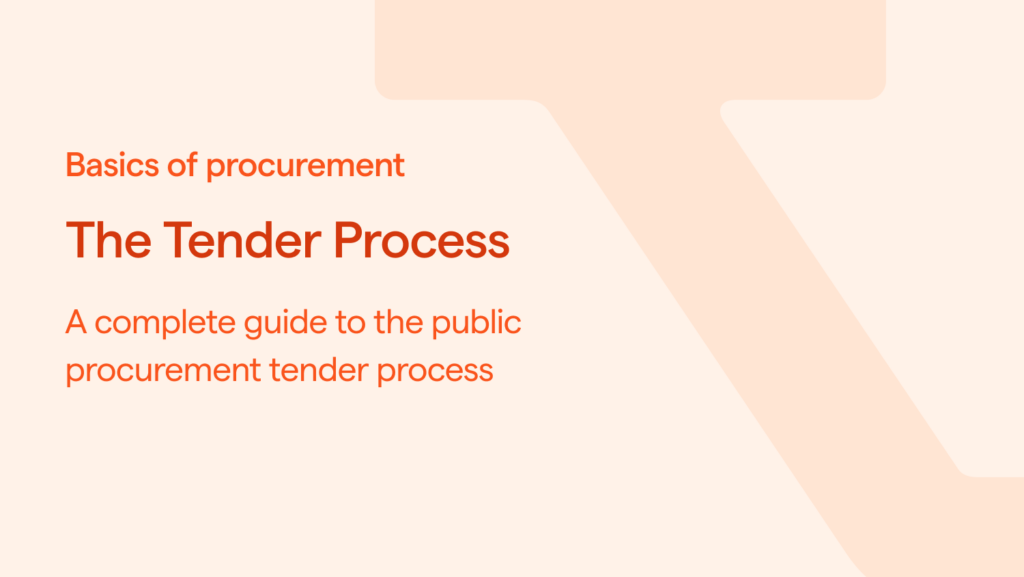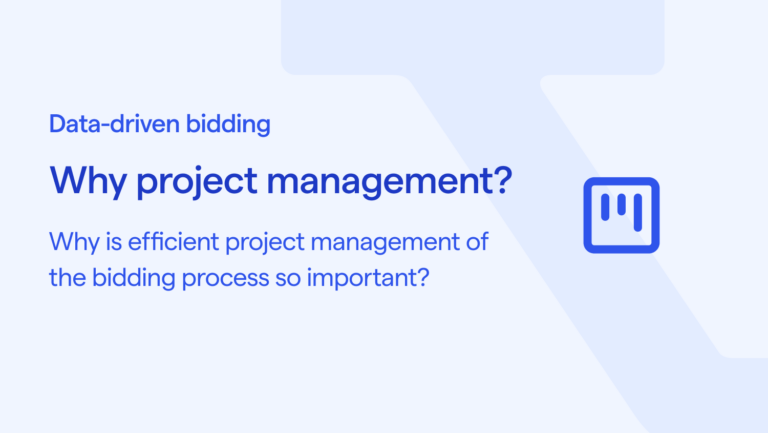For the uninitiated, the tender process can seem both daunting and complex. Rather than scouring the market, organisations in the public sector use procurements to qualify and select suppliers that will provide goods and services to them.
In contrast to a regular sales process, the tender process is rigorously regulated and is forced to follow certain steps and procedures to ensure it remains compliant. The reason for this is to ensure that public procurement remains an open and transparent process, where all suppliers get a chance to bid and are evaluated fairly.
While the tender process might at first glance look complex, its rigidity also means it is rather predictable. Once you have participated in public procurements a few times, you know what to expect. In this article, we guide you through the most common steps of the tender process.
1. Expiring contracts and preparations
Before a tender is published and the process begins, the organisation seeking services or goods prepares internally. Often, the organisation already has a supplier from an earlier procurement where the contract is due to expire in the near future. At this point, the organisation might be considering what has worked well, and what they might want to do differently ahead of a new contract.
While many suppliers simply wait for tenders to be published, should you want to have an edge on your competitors, it might be a good idea to keep track of when interesting contracts expire. Working proactively in this way, you can get in touch with buyers and be on their radar before they proceed with publishing a tender opportunity.
2. A tender notice is published
When an organisation is ready to move on to the next step of the tender process, they publish a tender notice. These will in most instances include a series of documents detailing the project, goods or services sought after, and can be considered an official invitation for suppliers. The documents traditionally outline the next steps in the process and list any requirements and criteria that suppliers must meet to be qualified as potential suppliers.
Tender notices are, in most cases, published in a procurement database. In Europe, one of the most important procurement databases to note is Tenders Electronic Daily, or TED for short – an online portal that publishes upwards of around half a million public tender notices each year. Suppliers interested in selling to the public sector monitor these databases, and in this way locate relevant opportunities to bid on.
3. The bidding process begins
Once a tender notice is published, suppliers can begin writing a bid. Interested suppliers review the tender documents to be able to understand what a successful bid should contain, and in case of uncertainties, suppliers may ask the buyer clarification questions. To promote transparency and fair competition, suppliers can review any questions that may have been asked, as well as the buyer’s answers.
Tender notice documents will also communicate the tender process timeline. Suppliers must pay special attention to any deadlines that are set for submitting questions, and by when a final bid must be submitted. While buyers are obliged to receive and answer questions, they are not required to do so indefinitely throughout the tender process.
At this stage, suppliers will often hold internal dialogues throughout different departments, in order to provide detailed information about their experience, qualifications and any proposed pricing that might be relevant to the opportunity. This information is crucially important and must be included in the bid if the buyer requests it.
4. Bids are submitted, and the tendering period ends
Every tender has a deadline whereby bids must be received. Bids received after the deadline may be disregarded entirely, but it is not always wise to submit bids as early as possible. Instead, it’s often a good idea to wait until after the buyer has answered any clarification questions, as competing suppliers might ask the buyer relevant questions that could provide new and important information for your bid.
5. The buyer evaluates bids
Once the tendering period has reached its end, the buyer will proceed to the bid evaluation stage whereby it considers any bid that has been submitted. The evaluation follows a specific process stipulated in the tender notice and can include aspects such as price, quality, suppliers’ experience and qualifications. This stage also gives the buyer the chance to exclude non-compliant bids, which is why it is of the utmost importance that you pay particular attention to any requirements and criteria that are communicated in the tender notice.
6. Negotiations begin
After initial evaluations, the organisation that published the tender notice may choose to shortlist or select one or more suppliers to move forward in the process. Once suppliers are selected, the buyer will begin to negotiate the terms and conditions of the contract. This includes the specifics of the project, a timeline for completion, and payment terms.
Should the buyer find that it has received only non-compliant bids, or if too few bids have been received, the entire tender process may be cancelled or abandoned. Information regarding situations such as these is included in the tender notice, and public organisations will most often reissue their tender notice at a later date, with minor adjustments.
7. The contract award notice and standstill period
Finally, a contract is agreed upon and signed. The public organisation that published the tender notice will then issue a contract award notice, detailing the successful supplier or suppliers. This marks the end of the tender process, and suppliers and the buyer will turn their attention towards the project at hand.
Unsuccessful suppliers still have the opportunity to seek further information from the buyer, call for a review of the buyer’s decision, and, should they believe that the decision was unlawful or otherwise unfair, they may challenge the decision. However, this is only permitted within what is called the Standstill Period, which in Europe must be a minimum of 10 days, as determined by the European Commission. Within this time, contracting organisations and suppliers may not sign any contract.
Navigate the tender process with Tendium
With Tendium’s AI-powered platform, you will have the very best tools for efficient public procurement monitoring and bidding. Why not start a free trial today?







